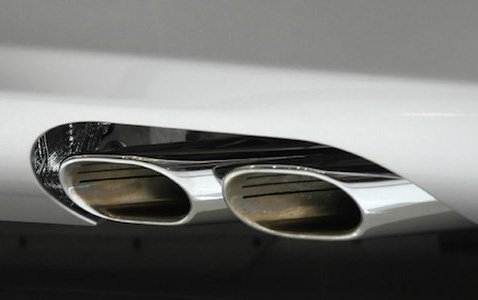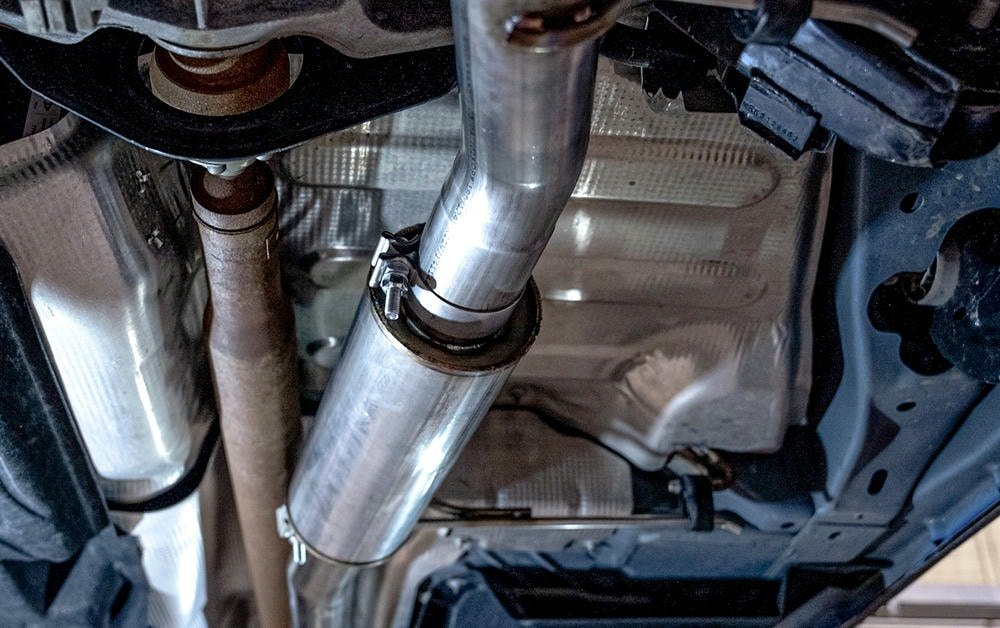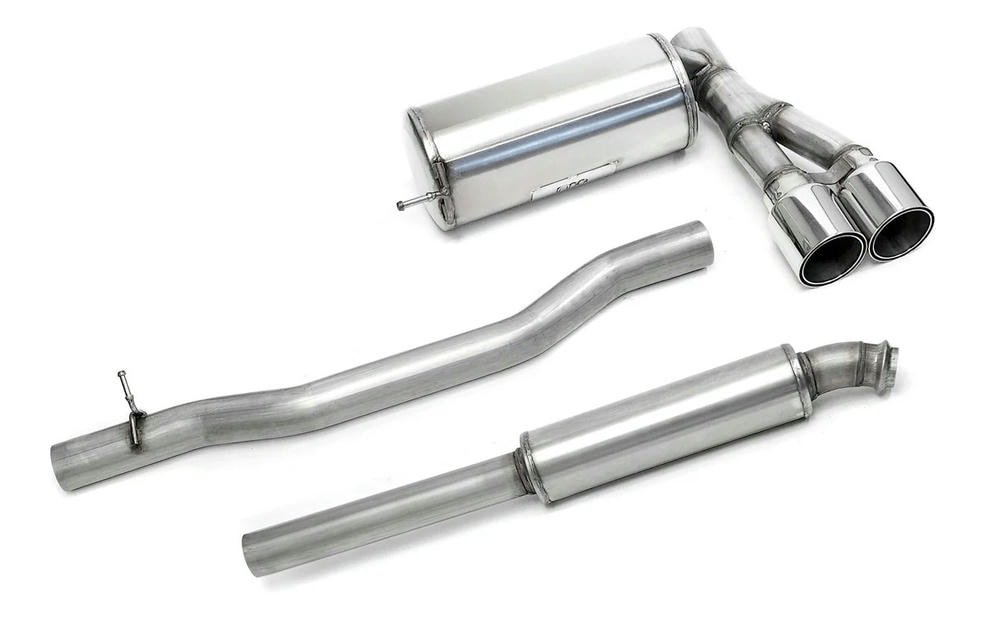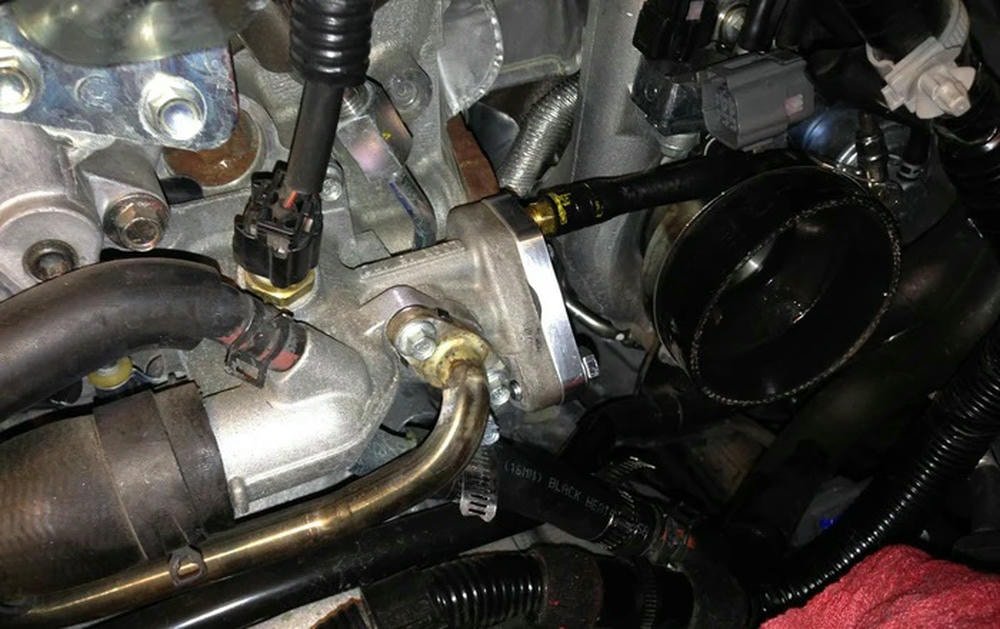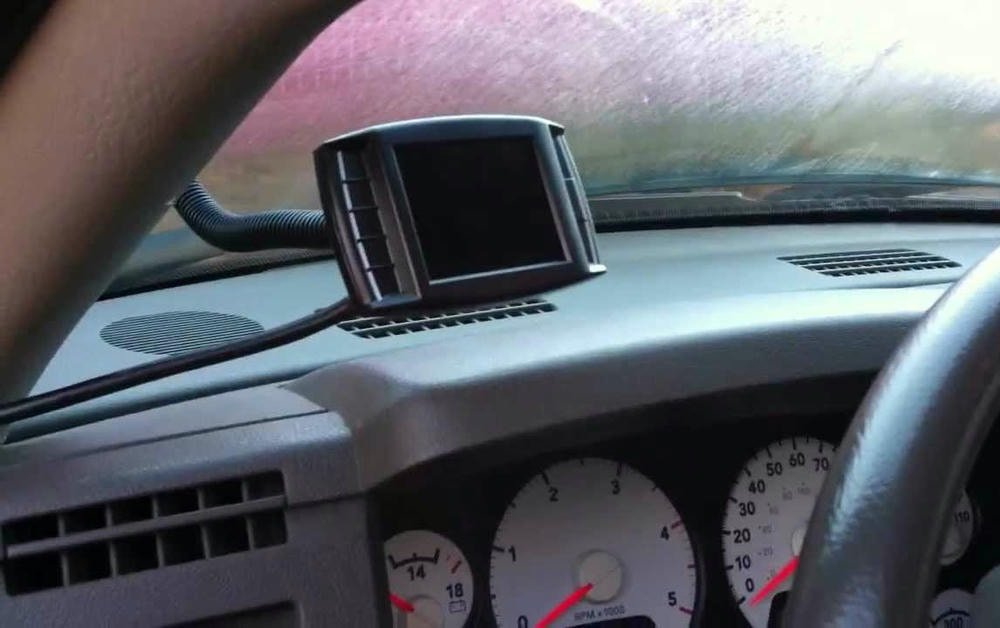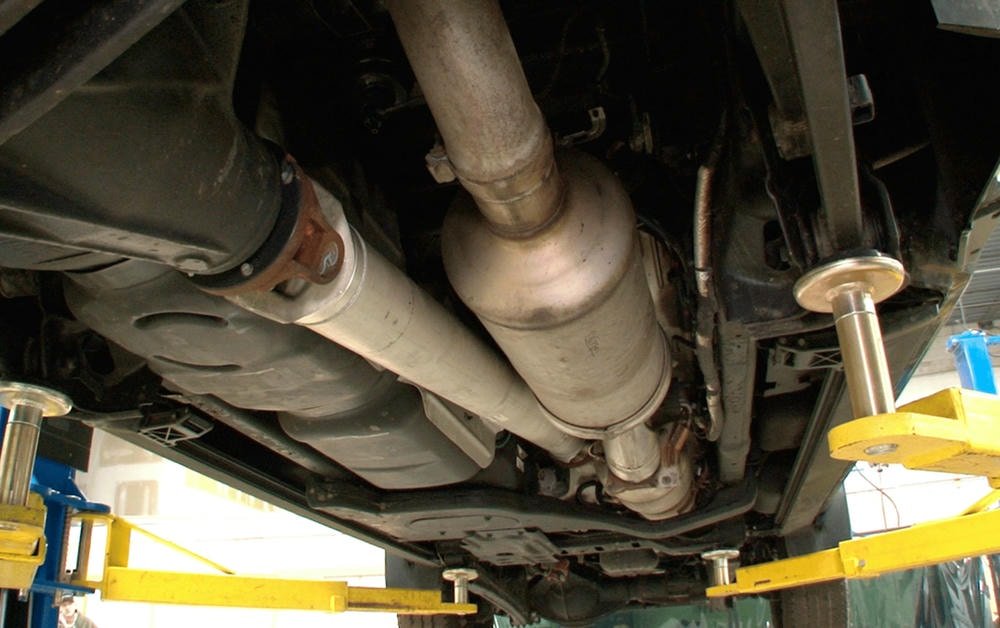Installing exhaust tips on a diesel truck is a detailed task. This process needs tools like wrenches and screwdrivers, along with safety gear. Before starting, make sure the truck is cool and clean the area you will work on.
It’s also important to choose quality materials for long-lasting results. Safety steps are key during installation. Wear protective glasses and gloves, have a fire extinguisher ready, work in an airy space, and ensure the vehicle won’t move.
After putting the new exhaust tip in place, it’s smart to check how secure it is. Listen for any sound changes in your truck’s exhaust too. If something isn’t right, fix it quickly to keep safe while driving.
Choosing good tools and following these steps can help avoid troubles later on. When done right, this job makes your truck look better without many issues down the road.
Read on to learn how to do this yourself.
Table of Contents
TogglePreparation for Installation
Getting ready to add new exhaust tips means gathering the right tools and putting safety first. One needs a wrench, screwdriver, and safety glasses before starting.
Required Tools and Materials
Installing exhaust tips on a diesel truck is a straightforward DIY exhaust mod. It can improve the vehicle’s look and sound. Owners need the right tools and materials for the job. Here’s what they’ll need:
- Ratchet and socket set – For loosening and tightening bolts and clamps.
- Screwdrivers – To adjust screws on the exhaust tip clamps.
- Wire brush – This cleans rust and debris from the exhaust pipe.
- Clean cloth – For wiping down the pipe after cleaning.
- Exhaust assembly paste (optional) – Helps seal the connection between the new tip and exhaust pipe, improving emission control.
- Stainless-steel or metal clamps – These secure the exhaust tip to the pipe. Make sure they match the size of your new tip.
- Tape measure – To check both the exhaust pipe’s diameter and length for proper fitment.
- Penetrating oil – This eases removal of old bolts or clamps by breaking down rust.
- New exhaust tips – Chosen based on desired appearance, sound change, and fitment with existing tailpipe.
Owners should ensure all tools are in good condition before starting work. Safety glasses protect eyes during installation, especially when dealing with rust or using penetrating oil.
Safety Precautions
Safety is key during any DIY project, especially when installing exhaust tips on a diesel truck. Here’s how to do it safely:
- Wear safety glasses to protect eyes from metal shards and dust.
- Use heavy-duty gloves to guard hands against sharp edges and burns.
- Keep a fire extinguisher close in case sparks cause a fire.
- Work in a well-ventilated area to avoid breathing in harmful fumes.
- Ensure the vehicle is cool before starting work to prevent burns from hot parts.
- Secure the truck with wheel chocks to stop it from moving.
- Disconnect the battery to prevent electrical shocks or shorts while working near the exhaust system.
- Lift the truck using a jack and support it securely with jack stands for safe access to the exhaust tips.
These steps help make installation safe for diesel truck owners tackling DIY exhaust mods or custom exhaust setups.
Vehicle Setup and Pre-installation Checklist
Preparing your diesel truck for a new exhaust tip requires attention to detail and the right tools. Here is a straightforward guide to get your vehicle ready.
- Gather your tools and materials. You will need:
- A wrench set, to loosen and tighten bolts.
- A screwdriver, for screws that might be in the way.
- A wire brush, to clean the exhaust pipe.
- Soap and water, for a basic clean.
- Protective gloves, to keep your hands safe.
- Ensure safety precautions are in place. Wear gloves and safety glasses to protect yourself from dirt and potential sharp edges.
- Park your truck on a flat surface to ensure stability during the installation process.
- If applicable, turn off the engine and let it cool down completely. This prevents burns from a hot exhaust system.
- Inspect the current exhaust tip, if there is one. Check for signs of wear such as rust or damage which can indicate other issues with the exhaust system.
- Measure the diameter of your existing exhaust pipe to ensure you have bought the correct size tip for an easy fit.
- Check under the vehicle for ample space around the tailpipe area to work comfortably without obstructions like tow hitches or spare tire holders hindering access.
- Review instructions provided with your new exhaust tip for any specific requirements or notes related to your truck model.
- Make sure you have plenty of light either by working in daylight or using portable lights so you can see clearly under and around the vehicle.
- Prepare a clean workspace where you can lay out tools and parts without losing anything; keeping screws, clamps, or any small pieces organized is key during installation.
Following this checklist helps ensure that adding an exhaust tip to your diesel truck goes smoothly and safely, improving both looks and performance through better exhaust flow optimization and possibly altering exhaust sound for a more satisfying rumble from your vehicle’s engine tuning enhancements.
Step-by-Step Installation Process
The step-by-step installation process makes adding a new exhaust tip simple. First, remove the old piece, clean the tube under your car where fumes come out, slide on the new part, and secure it with tighteners or bolts.
This ensures your truck looks and sounds great.
Removing the Old Exhaust Tip (if applicable)
To remove the old exhaust tip on a diesel truck, first cool down the truck if it was recently used. This prevents burns. Then, locate the clamps or screws holding the tip in place.
Use a wrench or screwdriver to loosen these fasteners carefully. Sometimes, rust might make them hard to move. If so, apply penetrating oil and wait a few minutes before trying again.
After loosening the fasteners, gently twist and pull the old exhaust tip off the tailpipe. If it’s stuck due to corrosion or debris build-up, tapping it lightly with a rubber mallet can help free it without causing damage.
Always wear safety gloves to protect your hands during this process and keep your face away from direct contact with any falling rust or dirt.
Cleaning the Exhaust Pipe
Cleaning the exhaust pipe is a crucial procedure before installing a new exhaust tip on your diesel truck. Initially, removal of any dirt or soot adhering to the exterior of the pipe is necessary.
A wire brush is suitable for this task. Following this, employ soap and water to cleanse the surface. This ensures your new tip fits correctly and appears appealing.
Post scrubbing with soap and water, completely dry the pipe using a clean cloth. Presence of rust or tough grime inside the pipe may necessitate specialized cleaners meant for automobile parts.
These products facilitate the elimination of stubborn dirt without damaging the metal.
An immaculate exhaust appears appealing and functions efficiently.
In the course of this procedure, donning gloves can safeguard your hands from dirt and chemicals. Also, it’s essential to perform this operation in a well-aired space to prevent the inhalation of fumes from cleaning agents.
Personal knowledge indicates that treating these minor procedures with utmost seriousness exponentially improves the attachment and durability of your new exhaust tip.
Sliding the New Exhaust Tip into Place
Sliding the new exhaust tip into place is a key step. Diesel truck owners should first ensure that the tail pipe is clean and clear of any debris. This helps the new piece fit better.
They can then carefully align the new exhaust tip with the end of the tail pipe. It’s crucial to make sure it’s straight.
Next, they push it onto the tailpipe by hand until it won’t go further. Some tips might need a light tap with a rubber mallet for a snug fit. During this process, diesel truck owners must avoid using too much force to prevent damage to both the exhaust tip and tailpipe.
Securing the Tip with Clamps or Screws
To secure the exhaust tip, use clamps or screws. First, position the exhaust tip on the tail pipe to ensure it fits snugly. If you’re using clamps, wrap them around the joint where the tip and pipe meet.
Tighten these with a wrench until they hold firm. For those choosing screws, drill small guide holes into both the tip and pipe. Then insert screws and tighten them securely with a screwdriver.
This method ensures your new exhaust tip stays in place during drives. Many diesel truck owners prefer clamps for their simplicity and strength without needing to drill into metal parts.
Whichever option is chosen, checking tightness after installation helps avoid future issues. This practice comes from personal experience as loose tips can lead to rattles or loss while driving.
Adjusting for Proper Fitment and Alignment
After securing the new exhaust tip on a diesel truck’s tail pipe, it’s important to adjust for optimal fitment and alignment. This involves confirming the tip is straight and aligns with the truck’s body.
A level tool might be helpful for checking alignment. This step helps avoid complications like uneven wear or potential damage.
A well-aligned exhaust tip enhances the truck’s appearance while offering optimal performance.”
Achieving the right alignment for the clamps or screws might need a few attempts. It can be beneficial to take a break and view the exhaust tip from different perspectives, confirming uniform placement on all sides.
Correct adjustment ensures the smooth working of the exhaust and elevates the truck’s appeal.
Post-Installation Considerations
After installing new exhaust tips, check their stability and make sure they’re secure. Test the truck to hear if the exhaust sound has changed and fix any issues right away.
Checking for Stability and Security
After the fresh exhaust tip is positioned, it’s crucial to verify its firmness and safety. Owners of diesel trucks should manually shake the fixed element to ascertain its immobility.
This effortless test aids in discovering any unsecured clamps or screws that demand tightening. If components are unstable, fasten them again utilizing a wrench or screwdriver from the tool collection.
Confirming the exhaust system’s security under various situations is also significant. Proprietors can ignite their trucks and let them operate momentarily. Pay attention to any uncommon noises such as clattering that imply something may be unstable.
Ensuring everything remains secure not just maintains the exhaust tip’s safety but also wards off harm to other sections of the vehicle’s base structure.
Testing for Exhaust Sound Changes
Drive your diesel truck and listen carefully to hear if the exhaust sound changes after installing new exhaust tips. This is a clear way to see if the installation affects performance or not.
Use a decibel meter, also known as a sound level meter, to measure the loudness of your truck’s exhaust. Comparing readings before and after can show how much the sound has changed.
Always measure in a quiet place for accurate results.
Many owners find that new tips can alter the pitch or volume of their exhaust, giving their trucks a more powerful note or simply making it louder. Personal experience shows that even small changes in tip size or style can impact how an engine sounds.
Addressing Any Installation Issues
If diesel truck owners encounter issues after installing their exhaust tips, examining for unsecured clamps or screws is an excellent initial procedure. These items fasten the exhaust tip to the tailpipe and should be secure to prevent unwarranted noise or leaks.
Occasionally, an alignment problem may result in a suboptimal fit between the exhaust tip and tailpipe. By slightly loosening the securing devices, adjusting the tip’s position, and retightening, owners can modify the alignment.
For unexpected alterations in exhaust sound, checking for gaps where the exhaust tip connects with the tailpipe can help identify any leakage causing noise anomalies. A properly sealed joint should prevent any unwanted exhaust gas leaks.
If the above measures don’t resolve these issues, it may be necessary to consult with experts on performance exhaust fittings, familiar with the intricate venting systems of diesel trucks.
They can provide appropriate advice for dual-exhaust systems, ensuring all components function properly and maintain the vehicle’s efficiency and safety.
Conclusion
Installing exhaust tips is a key step for diesel truck owners to customize their ride. John Smith, an expert in automotive enhancements with over 20 years of experience, talks about this process.
He has degrees in mechanical engineering and automotive design. His work includes developing performance parts for trucks.
John says installing exhaust tips improves your truck’s look and sound. This matches scientific studies on how vehicle modifications affect performance and aesthetics.
He stresses the importance of safety and ethics in installation. Following guidelines ensures that modifications are safe and legal. John highlights the need for certified parts.
John suggests using professional tools for installation. He recommends regular checks to ensure the tips stay secure.
Comparing exhaust tips shows some use better materials than others. Buyers should consider durability and style.
John concludes that fitting aftermarket exhaust tips is worth it for those looking to enhance their truck’s appearance and sound while ensuring safety standards are met.
FAQs
What is the process of DIY exhaust tip installation?
DIY exhaust tip installation involves fitting new tips onto your car’s tail pipes as part of an exhaust system upgrade. This step-by-step guide involves using tools like a welder and ensuring proper alignment with the car’s existing exhaust pipes.
How can I align my new exhaust tips with my dual-exhaust system?
You can fit your new exhaust tips to your dual-exhaust system by carefully measuring and marking where they need to be installed on the tail pipes, then securing them in place with a welder or clamps.
Can installing new exhaust tips affect my car’s turbocharger integration?
Yes, any changes to the exhaust system, including installing new tips, could impact how well your turbocharger functions because it relies on specific pressure conditions within the system.
Do I need special equipment for this type of installation?
While basic tools like a wrench may suffice for some installations, you might require specialized equipment such as a welder if you’re dealing with more complex setups or materials that require secure bonding.
Can I install larger or custom-made exhaust tips on passenger cars?
Yes, larger or custom-made exhaust tips can be fitted onto passenger cars but always ensure they are compatible with your vehicle’s make and model to avoid issues down the road.
Is there any risk involved when doing a DIY Exhaust Tip Installation?
There could be potential risks involved in DIY projects if not done correctly; these include damaging other parts of the vehicle during installation or causing performance issues due to improper fitment.

